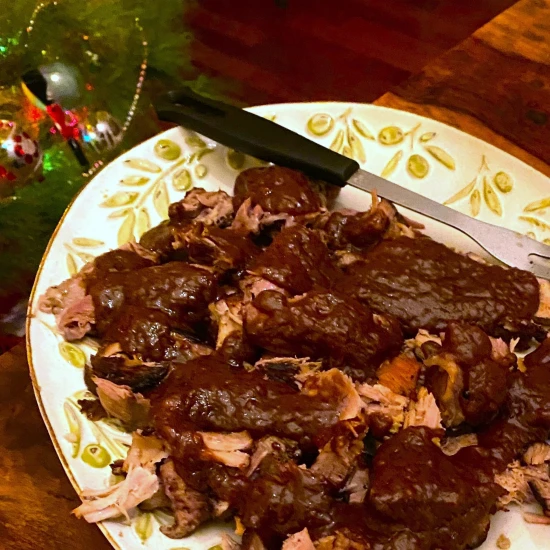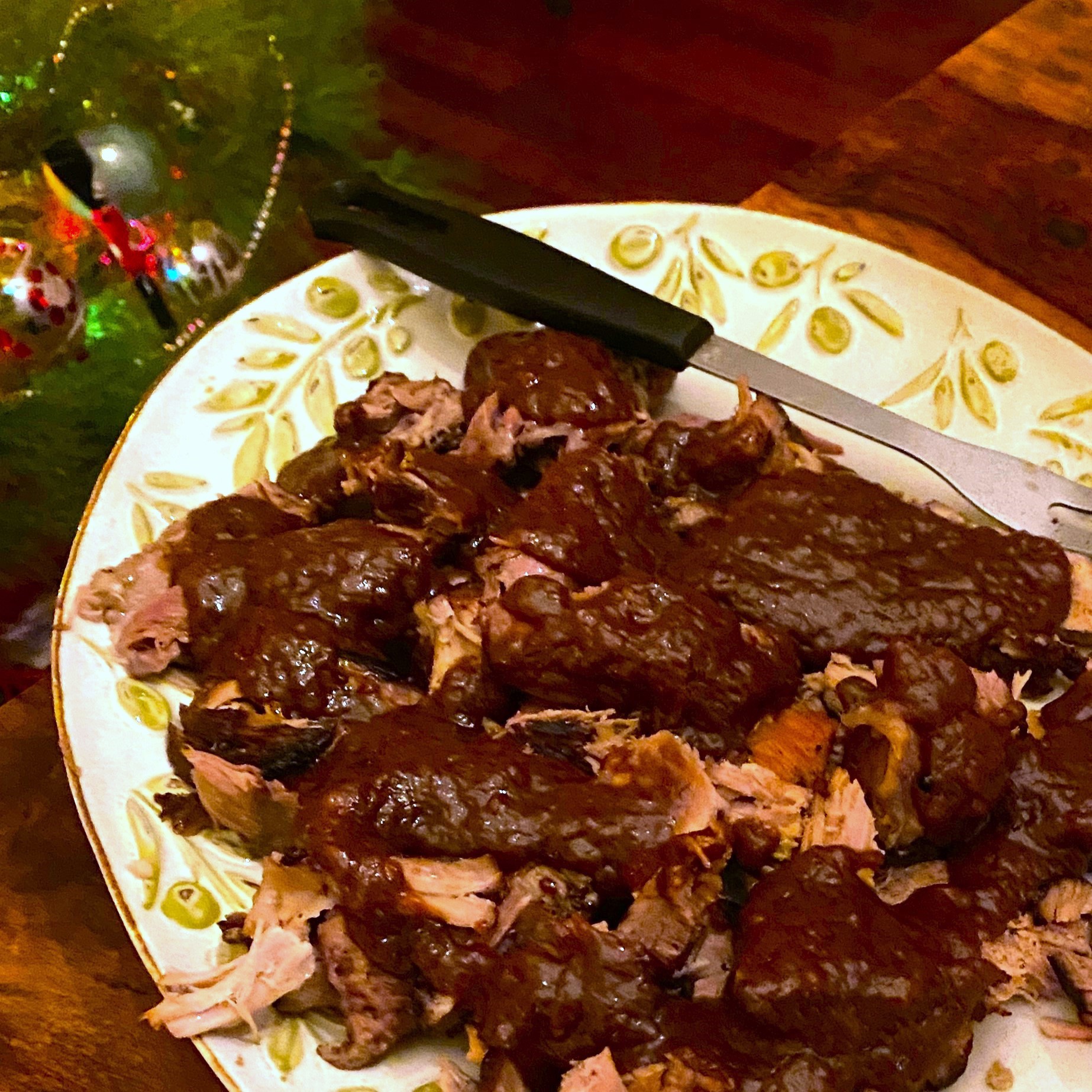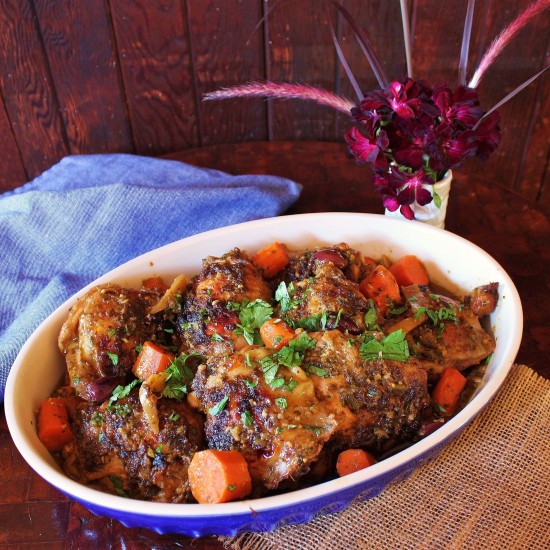
I don’t usually post entree recipes from the holidays – simply because my ravenous family would never allow me the 15-20 minutes needed to arrange, style, light, and photograph a good “hero” shot of our succulent roasted beast. Mr. M snapped a few candid pics this year just before we sat down to devour our feast, so please forgive the photo quality.
TODAY’S RECIPE:
We’re pork eaters in my family (Schweinefleischessers in German). Yes, we eat beef, but we looovveee our pork. During Thanksgiving, we were chatting about what I should make for Christmas Eve dinner and my sister said,“Make a pork roast.“ Well, I make a simple pork roast with onions and apple cider almost every year for Christmas Eve dinner and wanted to cook something a little different this year. I remembered my mother’s beef sauerbraten recipe and wondered if it could be adapted for pork. (Actually, what I remember is the gingersnaps used to thicken the sauce – and eating the leftover cookies.) In theory (according to Google), pork sauerbraten exists, yet I couldn’t find a recipe – so I created my own version here. It has the flavor of Sauerbraten, yet the meat is succulently moist. If you are a Schweinefleischesser like us, you may want to give this recipe a try. We served ours with my mother’s spaetzle recipe.
PORK SAUERBRATEN

This is a traditional German Sauerbraten recipe using pork rather than the expected beef.
Ingredients
- MARINADE
- Approximately 3 lbs. pork shoulder
- 2 cups red wine
- 1 cup red wine vinegar
- 3 shallots, peeled and sliced
- 3 bay leaves
- 2 Tablespoons mustard seeds
- 1 Tablespoon black peppercorns
- 1 Tablespoon coriander seeds
- 1 Tablespoon brown sugar
- 1 teaspoon juniper berries
- 1 teaspoon allspice berries
- 1 teaspoon caraway seeds
- 1 teaspoon Kosher salt
- ½ teaspoon whole cloves ROAST
- 1 celery stalk, diced
- 2 large carrots, diced
- 1 leek, cleaned very well and diced
- 1 Tablespoon tomato paste
- 2 cups beef stock
- 8 gingersnaps
- cornstarch or roux, if needed
Directions
- Marinate the meat (3 days in advance): In a large container with lid, stir together all marinade ingredients, then submerge pork in marinade. If not submerged, top off with a little extra wine if needed. Place in the fridge and marinate for 3-4 days, turning daily.
- Cook: Preheat the oven to 350°F. Remove the pork from the marinade and pat dry with paper towels. Pour the marinade through a sieve and reserve 2 cups for the sauce.
- Heat oil in a Dutch oven or large heavy saucepan. Brown meat well on all sides over medium-high heat. Remove from the pan and set aside. Add more oil to the pan, if needed, then add the celery and carrots. Cook over medium-high heat for about 7 minutes until beginning to soften, then add the leek and cook an additional 2 minutes.
- Add the tomato paste to the pan and sauté until beginning to brown. Add the beef stock and 2 cups of the drained marinade to the pan and scrape up any browned bits. Bring to boil and remove from heat. Add meat to pan, including any resting juices. Cover and braise in the oven 2-2.5 hours until fork tender.
- Remove pork from pan and let rest. Strain the cooking liquid into an oil separator (if needed). Pour liquid into a saucepan, stir in the crushed cookies and simmer until cookies are dissolved. If the sauce needs to thicken further, stir cornstarch into a little cold water to make a slurry and add to the sauce or add roux. Simmer until thickened. Taste sauce and adjust seasoning with salt, pepper, and a splash of red wine vinegar. Slice pork and smother with sauce, serving with more sauce on the side.





